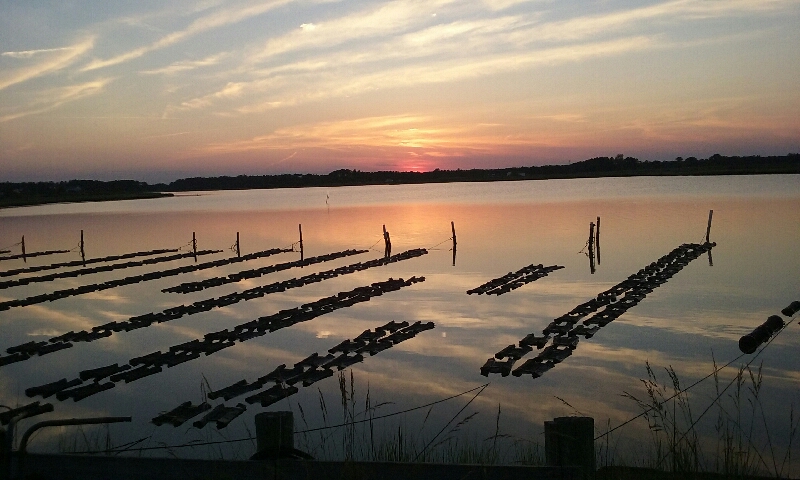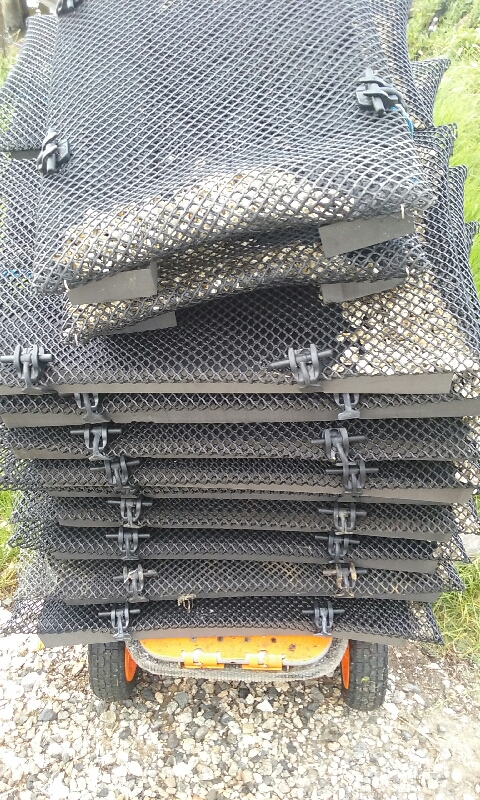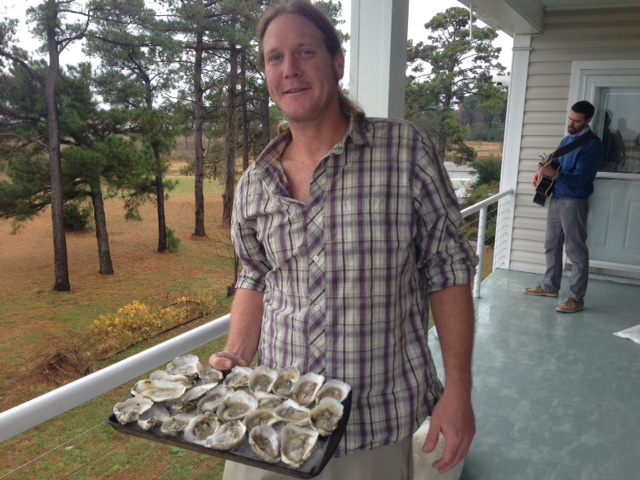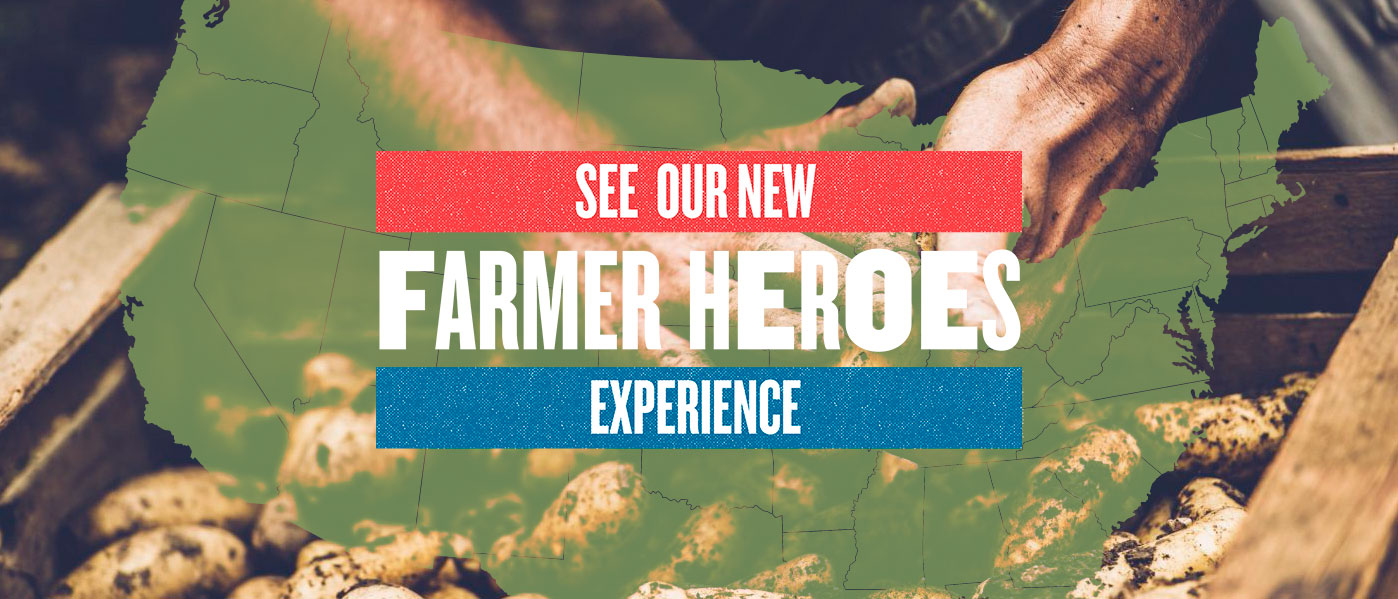Daniel Vogt of Big Island Aquaculture grew up on the water in Gloucester, Virginia, a community of “watermen” who work the ocean, fishing, raising and harvesting clams, crabs and oysters. Daniel says, “Growing up down here, clams, crabs and oysters are a staple.” Daniel’s parents raised clams and soft shell crabs during the 1980s, before returning to jobs in the corporate world. Fortunately for Daniel’s future, his mom had the foresight to maintain the family’s lease of 75 pristine acres of the Chesapeake Bay, even after they stopped raising crabs.
Daniel’s path to becoming an oyster farmer took him first to college, where he found that school wasn’t exactly his thing. He came back home, working construction jobs before finding a job conducting research on sturgeon as part of a restoration effort among state and federal agencies in Virginia and Maryland. Daniel’s boss and mentor, Dr. Chris Hager of the Virginia Institute of Marine Science, had a small oyster farm, where Daniel learned about farm-raised oysters. It was here that the seed for Daniel’s life’s work was planted.
Inspired, Daniel approached his parents with the idea to start an oyster farm. His dad Bruce agreed it was a worthy endeavor, and one that he’d be happy to join as a business partner. Daniel registered for classes at the Virginia Institute of Marine Science, learning what he needed to know to get started. He found that there was a good market opportunity for what he calls “a high class of oysters,” raised on the surface of the Chesapeake in floating bags, as opposed to being raised at the bottom, where sediment can produce a gritty, less clean oyster.
Five years ago Daniel planted his first crop of 50,000 oyster seeds. He says, “We knew we had pristine water, but we weren’t sure how they’d grow.” It was a long wait to find out: oysters take about a year to grow from a 7/16th of an inch seed to full size, depending on the variety of oysters and weather conditions. But that long growing period gave Daniel time to make sure that his business met all the required regulations and certifications. A year later, the results were in: Big Island Oysters were a hit.
Fast forward to today: 34-year-old Daniel and his dad Bruce are partners in a thriving business that isn’t just growing good food, it’s cleaning up the Chesapeake Bay. “An oyster filters 50 gallons of water a day… We are noticing major changes in the Bay thanks to the increased oyster population,” Daniel explains. “Oysters beget oysters. I notice more wild oysters now, and we see more shrimp, minnows, striped bass and dolphins. There’s more diversity right up the food chain.” Daniel says that his technique for raising oysters in floating bags also helps bring back the grass beds that are so crucial to the ecosystem of the Chesapeake, encouraging crab and fish breeding.
The beneficial impact that oysters have on the Chesapeake is no mere side benefit; it is crucial to the survival and revival of the Bay. Oysters consume nitrogen-containing compounds, phosphates, plankton, detritus, bacteria, and dissolved organic matter, removing them from the water. What is not used by the oyster for growth is expelled as solid waste pellets, which eventually decompose into the atmosphere. Historically, the Chesapeake Bay’s oyster population filtered nutrients from the estuary’s entire water volume every three to four days. After decades of overfishing, loss of habitat, pollution and disease, the current oyster population of the Bay—just a fraction of what it once was—would need nearly a year to filter the volume of the Bay. With each new crop of oyster seeds sown by scale appropriate and values-driven farms like Big Island Aquaculture, the future of Chesapeake Bay gets brighter. As Daniel puts it, “I finally found my passion: saving the Bay.”
Daniel takes care of the labor and husbandry tasks of the farm, working with the oysters, and Bruce handles all the marketing, orders and deliveries. Unlike your average young person, Daniel could care less about technology. He says, “I have no laptop… I’d rather be out on the water.” When he’s on the water, his cell phone goes in a dry bag, and that’s where it stays as he works seven days a week to plant, nurture and harvest his product.
Daniel harvests oysters three times a week, and a typical harvest day starts at 6 or 7 a.m. so that the oysters are harvested by 10 a.m. Each harvest is usually 2,500 oysters or so. Once pulled from the water, the oysters are pressure washed, bagged, tagged, and quickly put in the refrigerator so that they meet the regulations that require them to be cooled below 55 degrees within five hours. For a wild oyster harvest, this timing can be a challenge. But Daniel’s oyster farm has the advantage of being right on shore, which means his oysters go from water to fridge in a very short time—they’re about as fresh as you can get. The remainder of each harvest day is occupied with farm tasks until nightfall. The day after harvest, Bruce delivers the oysters to the restaurants, customers and special events where they’ll be enjoyed.
“An oyster filters 50 gallons of water a day… We are noticing major changes in the [Chesapeake] Bay thanks to the increased oyster population”
On non-harvest days, Daniel has a process of looking through the oyster bags, separating oysters by size to group like-sized oysters together and to identify oysters that are nearing harvest size. He also has a special technique that makes his oysters even more unique. Daniel built a machine that tumbles the oysters to hone the oyster shell to perfection. The end result is a shell with a deep cup in which to grow a more perfect oyster, and a smooth shell that doesn’t break or split upon opening.
Each year, Big Island Aquaculture’s harvest has grown exponentially. The growth of Daniel’s business is only limited by the number of acres and oysters he can care for himself. He’s currently farming just 3 of the 75 acres he leases, with the help of one employee. But he has a plan for expansion, to create jobs and opportunities for others in the community. Daniel explains, “We need more oysters out there to pull the carbon dioxide and nitrogen out of the water and keep it clean.”
Daniel’s biggest challenges are environmental ones—algal blooms and the whims of Mother Nature. Daniel says, “I try to treat her nice—she’s one you don’t want to mess with.” Two winters ago, she dealt Daniel a difficult winter, leaving a foot of ice on his creek. In order to harvest his oysters, he walked out on the ice with a 15-pound axe. When that didn’t work, he used his body weight, jumping up and down to break the ice. No matter the weather, minus 7-degree wind chill or 100-degree heat, Daniel has never missed an order.
Daniel calls his oysters “his babies,” and he takes great pride in hearing from his customers who say they’re the tastiest oysters they’ve ever had. Daniel doesn’t mince his words at all, calling his creamy, sweet, buttery oysters “the best in the world.” Though he works seven days a week, Daniel’s work allows him to grow good food that people love, work hard and enjoy the beauty of nature, and be part of the restoration of an essential ecosystem. “I’m blessed,” he says, and the joy on his face shows this is no mere hashtagged sentiment, but a sincere recognition of the good luck and hard work that have helped Daniel find his passion and purpose.
**Major thanks for Niaz Dorry at North Atlantic Marine Alliance (NAMA) for introducing us to Daniel and Bruce at Big Island Aquaculture. NAMA is a fishermen-led organization building a broad movement toward healthy fisheries and fishing communities. NAMA builds deep and trusting relationships with community based fisherman, crew, fishworkers and allies to create effective policy and market strategies. And they’re a partner to us because we recognize that farmers and fishers are at the root of a healthy food system and they face many of the same hurdles and opportunities.









